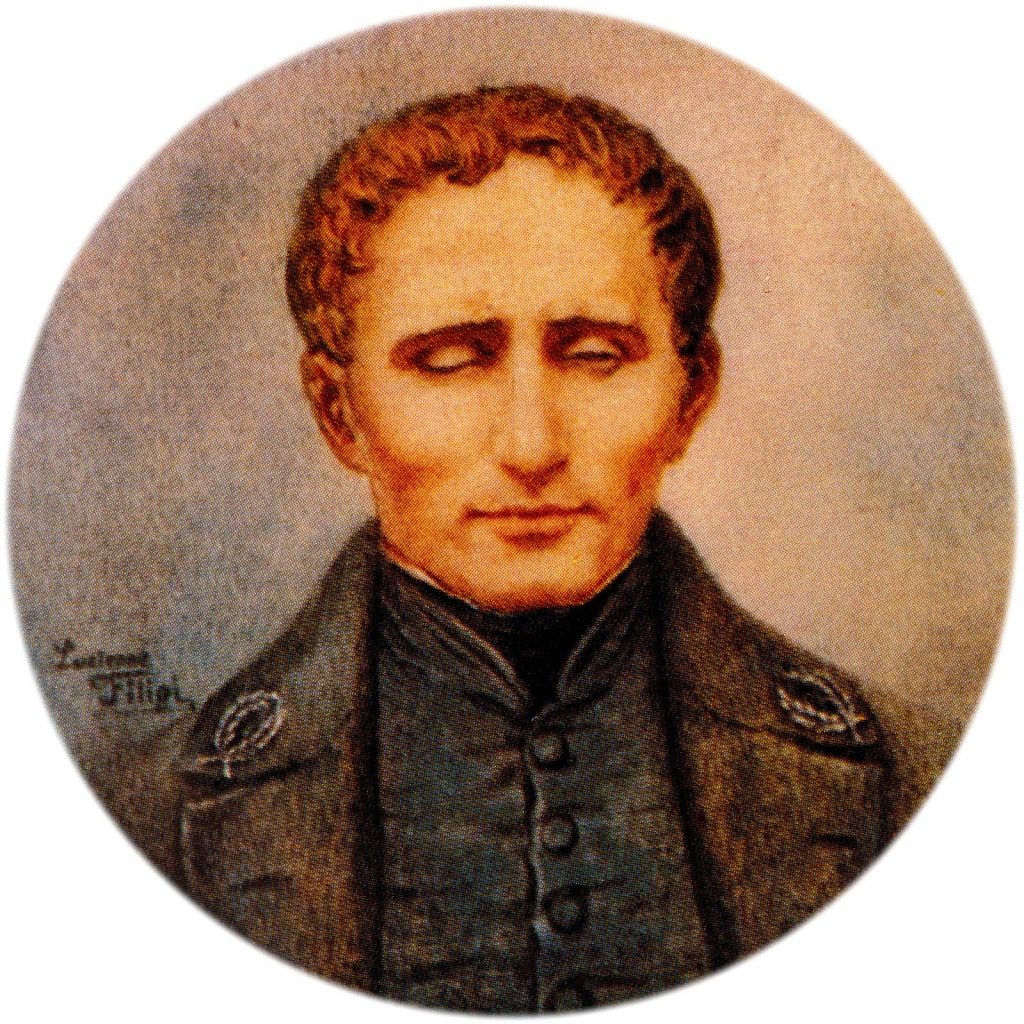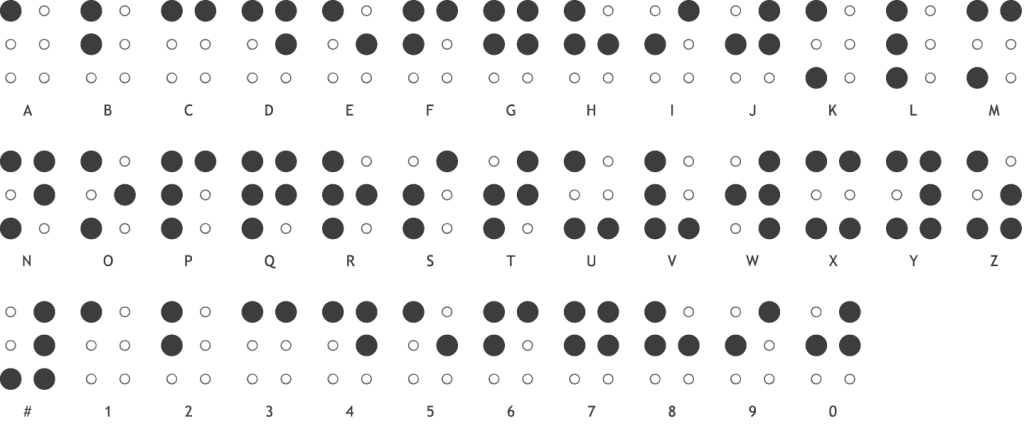The Invention of Braille (1824)

The history of braille – Typography
Braille is a reading system created for the visually impaired. Invented by Louis Braille, it is a revolutionary method of communication that, for the first time, allowed blind people to have fair access to literacy opportunities.
https://www.britannica.com/biography/Louis-Braille
The Braille writing system is based on Night Writing, an existing method of written communication developed by French soldiers in order to read in the dark. However, that system was impractical as it could not be read with only one finger – and the letters were made up of twelve dots instead of six – which made it more difficult to write.
The Braille writing system consists of raised dots that represent each letter of the alphabet, numbers, letter groupings, as well as punctuation. The system has a total of 63 characters. Braille is read in the same direction as written words: from left to right along each line on a page. It is made up of raised dots placed in six possible positions in a cell, read using the fingertip of the index finger. The characters were traditionally embossed on paper.
https://www.pharmabraille.com/pharmaceutical-braille/the-braille-alphabet/

Braille and Society – Cultural Impact
The invention of braille had a significant cultural impact. For all of prior history, blind people were unable to fully participate in social and political life due to a lack of accessible printed information. Before the introduction of Braille in society, blind people mainly communicated through speech and has to rely on sighted individuals to assist them in their everyday lives.
Thanks to Braille, blind and visually impaired people were capable of reading, writing, and counting like sighted people. Having access to Braille removes literacy inequalities the visually impaired would otherwise face.
http://www.s2k.com.au/product/braille3d-tactile-signs
Braille is just as important in society today as it was when first created. It has been adapted to nearly all languages, allowing blind people all over the world to have equal educational opportunities as the sighted. Access to Braille is also synonymous with greater independence for many blind individuals; 74% of visually impaired people educated using print required social assistance, while only 49% of those educated with braille did.



